Affiliate disclosure: This post may contain affiliate links. Please see our Privacy Policy.
Red Clover tincture is a gentle herbal remedy that’s used to treat menopausal and pre-menstrual symptoms in women. It’s also used to improve both skin and hair health, and promote healthy sleep patterns. It’s easy to make at home with just a few simple ingredients!
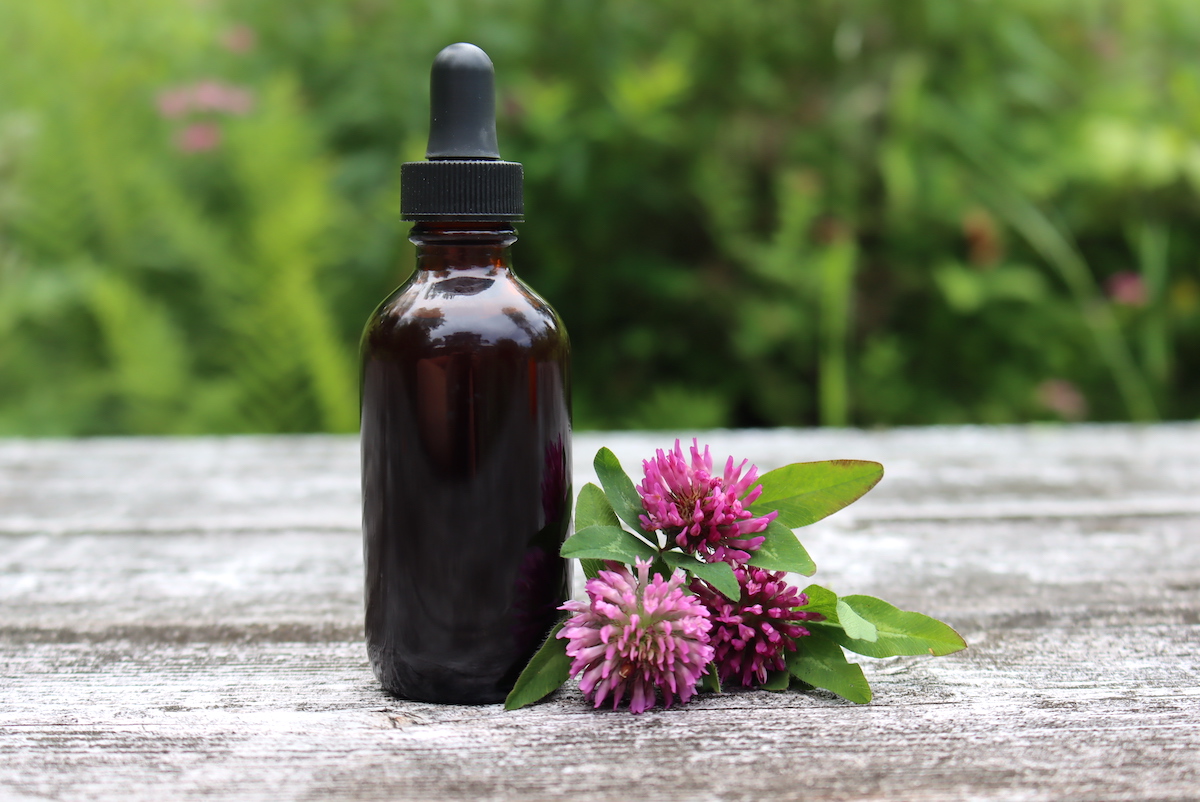
Red clover is so incredibly common, and you’ve probably seen this edible “weed” growing on lawns, alongside roadsides, and in fields from May through September.
While it’s common and easy to identify, few people know that red clover is not only edible, it’s also medicinal!
I’ll send my daughter out to gather it by the basketful, and we’ll make it up into red clover flour to make cookies for her…but I’ll save some aside for a nourishing red clover tincture to help this mama along.
Red clover tincture is commonly used to treat menopausal and menstrual symptoms, including hot flashes. It’s also used to improve sleep and promote skin health, as well as balance female hormones. All around, it’s a lovely herbal preparation for women.
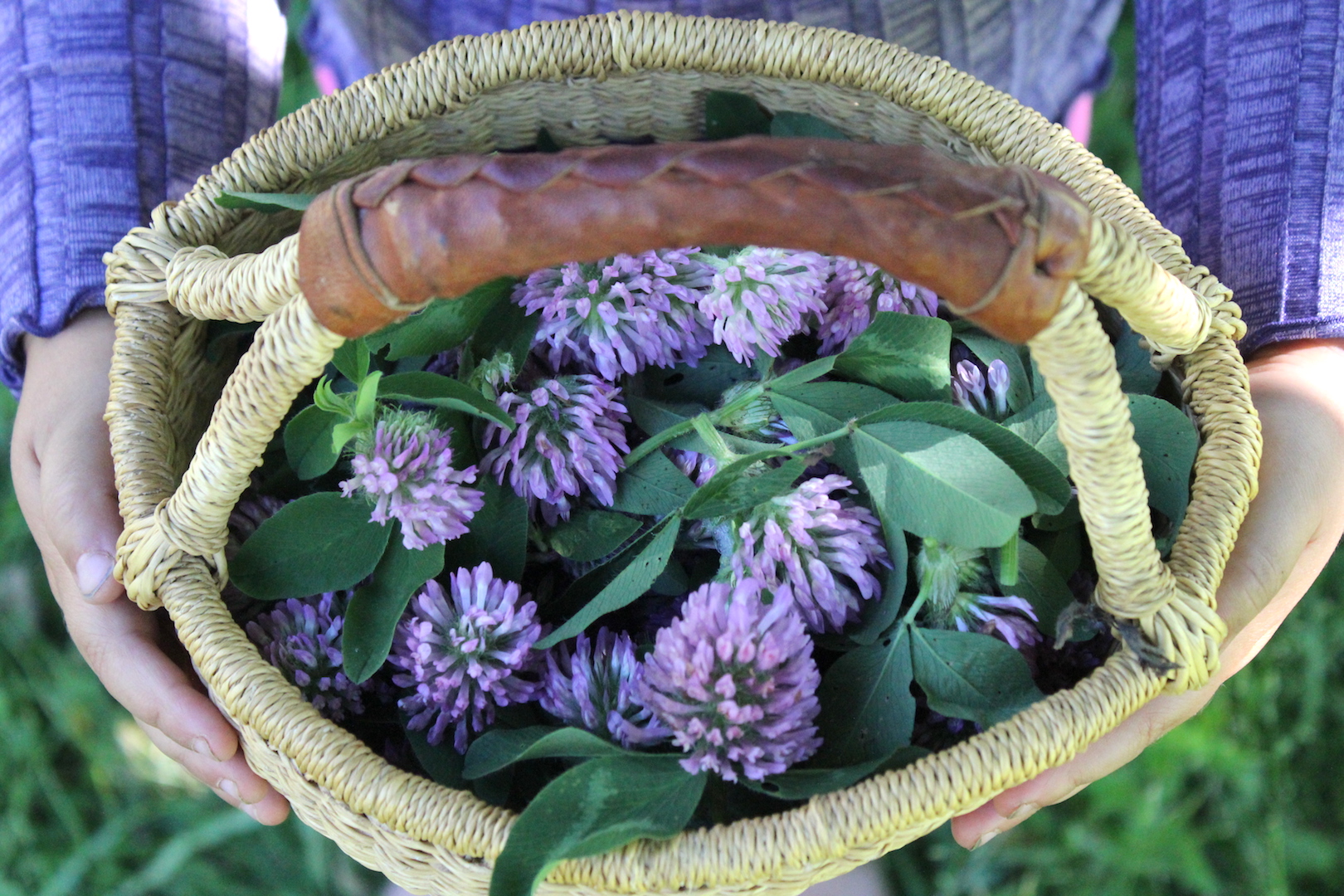
(Always consult your doctor or a clinical herbalist before trying any new herbal remedy, as there’s always the possibility of unintended consequences, allergic reaction, or interactions with other medication. If you’re harvesting wild plant material, make sure you’re 100% confident in your identification and consult multiple sources for your ID. The following is based on my research and experience, but I don’t claim to have any certifications that would qualify me to advise you on your health. Please do your own research and always verify with multiple reputable sources.)
Benefits of Red Clover Tincture
Perhaps the most well-known benefits associated with red clover have to do with the plant’s rich source of isoflavones, which are plant-based compounds that mimic the action of estrogen. This summary provides a good explanation of the relationship between red clover, isoflavones, and skin appearance:
Estrogens improve skin in many ways. Among these, they increase collagen content, skin thickness and improve skin moisture. There is evidence that diets with high levels of phytoestrogenic isoflavones are associated with a low incidence of menopausal symptoms and osteoporosis. Plant extracts such as red clover, which contain high levels of isoflavones, have been used to reduce menopausal symptoms and have been shown to reduce bone loss in healthy women.
Red clover has traditionally been taken for its ability to decrease the frequency of hormonal hot flashes, an application that is showing some promise in clinical trials. Research on osteoporosis, another condition related to lower estrogen levels, has shown that continued use of red clover extract may also be helpful for improving bone density. Another study found that women who took red clover extract reported “a subject improvement of scalp hair and skin status as well as libido, mood, sleep, and tiredness in postmenopausal women.”
Red clover’s potential effect on heart health is another area of study that has shown some promise. In smaller studies, the use of red clover extract has been linked to the lowering of LDL (bad) cholesterol and an increase in HDL (good) cholesterol, specifically with perimenopausal and postmenopausal women.

How to Make Red Clover Tincture
To make a red clover tincture, you’ll need the following ingredients and equipment:
- Red clover blossoms (fresh or dried)
- Vodka (or any neutral, drinkable alcohol that’s at least 80 proof/40%) – Don’t feel like you need to splurge on top-shelf vodka; something like Smirnoff works perfectly fine and won’t break the bank.
- 1-pint mason jar with a tight-fitting lid (amber glass is best, but as long as you store your tincture in a dark place, regular glass will do)
- Funnel
- Cheesecloth
- Fine mesh sieve
- Amber glass tincture bottles (with droppers for easy dosing)
A quick note on alcohol: Never use isopropyl or rubbing alcohol for tinctures, as it’s toxic when ingested. If you’re avoiding alcohol, you can make a herbal glycerite (a sweet herbal extract using vegetable glycerin) or try an herbal vinegar instead. Both work well with red clover.
To make your red clover tincture, start by packing your mason jar with red clover blossoms. If you’re using fresh flowers, fill the jar about three-quarters full, pressing the blossoms down gently to ensure they are tightly packed.
Fresh blossoms are light and airy, so it’s important to make sure they fill up the jar. For dried flowers, you’ll want to fill the jar about halfway.
Once your jar is packed, pour your chosen alcohol—vodka is a great option—over the red clover until the flowers are fully submerged. The alcohol should completely cover the blossoms, as this is what helps extract the beneficial compounds from the flowers. Seal the jar with its lid.
Next, place your jar in a cool, dark spot and let it sit for about 4 to 6 weeks. Give the jar a gentle shake every few days to keep everything mixed up (or daily, if you can remember, though a few shakes each week will suffice).
After the infusion period is over, it’s time to strain the tincture. Line a funnel with cheesecloth and carefully pour the tincture into small amber glass tincture bottles. Be sure to squeeze the cheesecloth to get every last drop of liquid from the flowers.
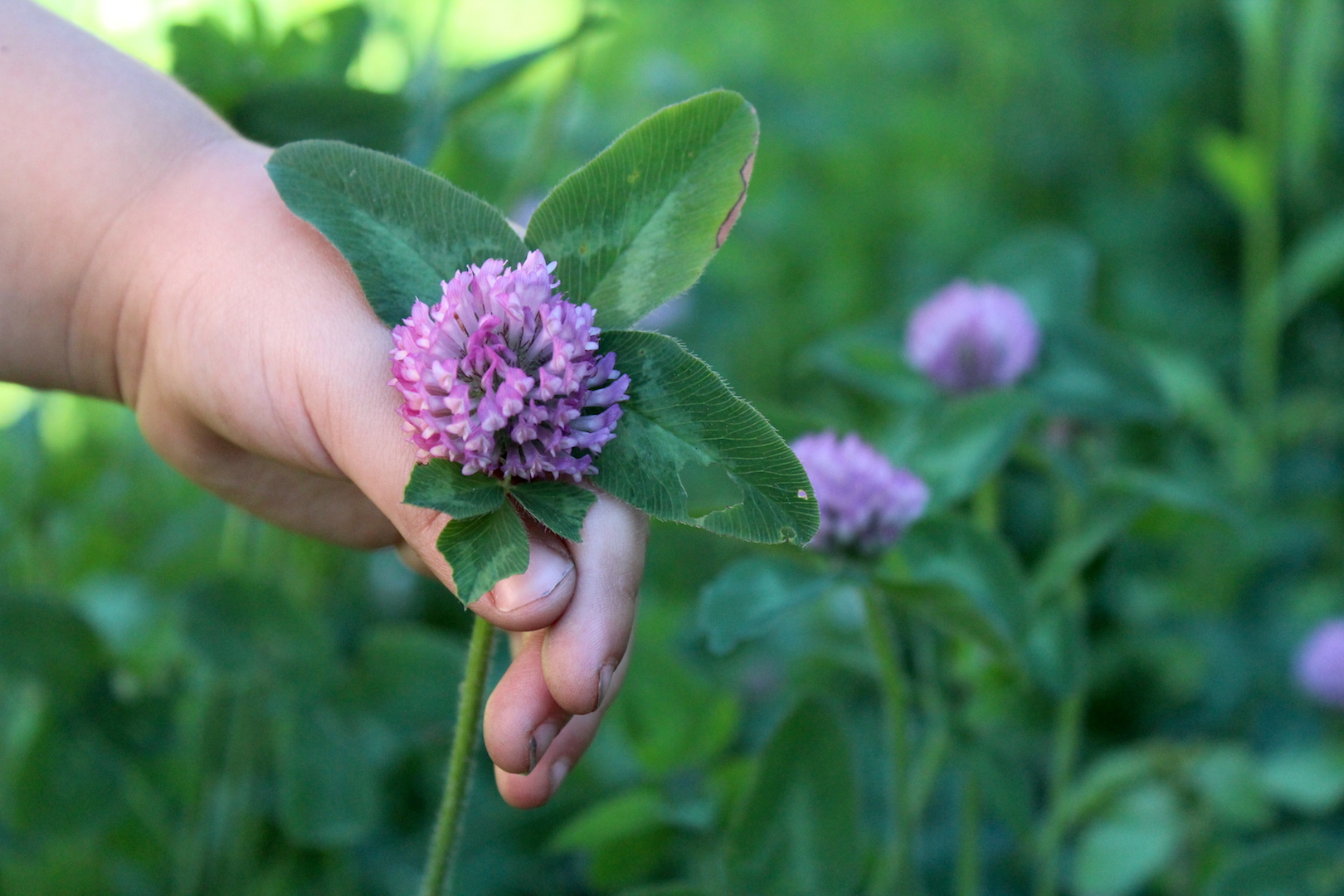
After the infusion period is over, it’s time to strain the tincture. Line a funnel with cheesecloth and carefully pour the tincture into small amber glass tincture bottles. Be sure to squeeze the cheesecloth to get every last drop of liquid from the flowers.
Finally, label your tincture bottles with the date and suggested dosage. I like to use masking tape and a marker for labeling since it’s easy to peel off when you want to repurpose the bottle later. Your homemade red clover tincture is now ready to use!
(For more information on the general process, I’d suggest reading this guide to making herbal tinctures at home.)
The 4-6 weeks of steeping may feel like a long wait if you’re in need of relief right now. If that’s the case, feel free to buy a ready-made bottle of red clover tincture to tide you over while your homemade batch infuses. Although store-bought tinctures can be pricey, they’re always there when you need them, like an herbal first aid kit. But trust me, once your homemade tincture is ready, you’ll appreciate the savings and the satisfaction of having crafted your own remedy.
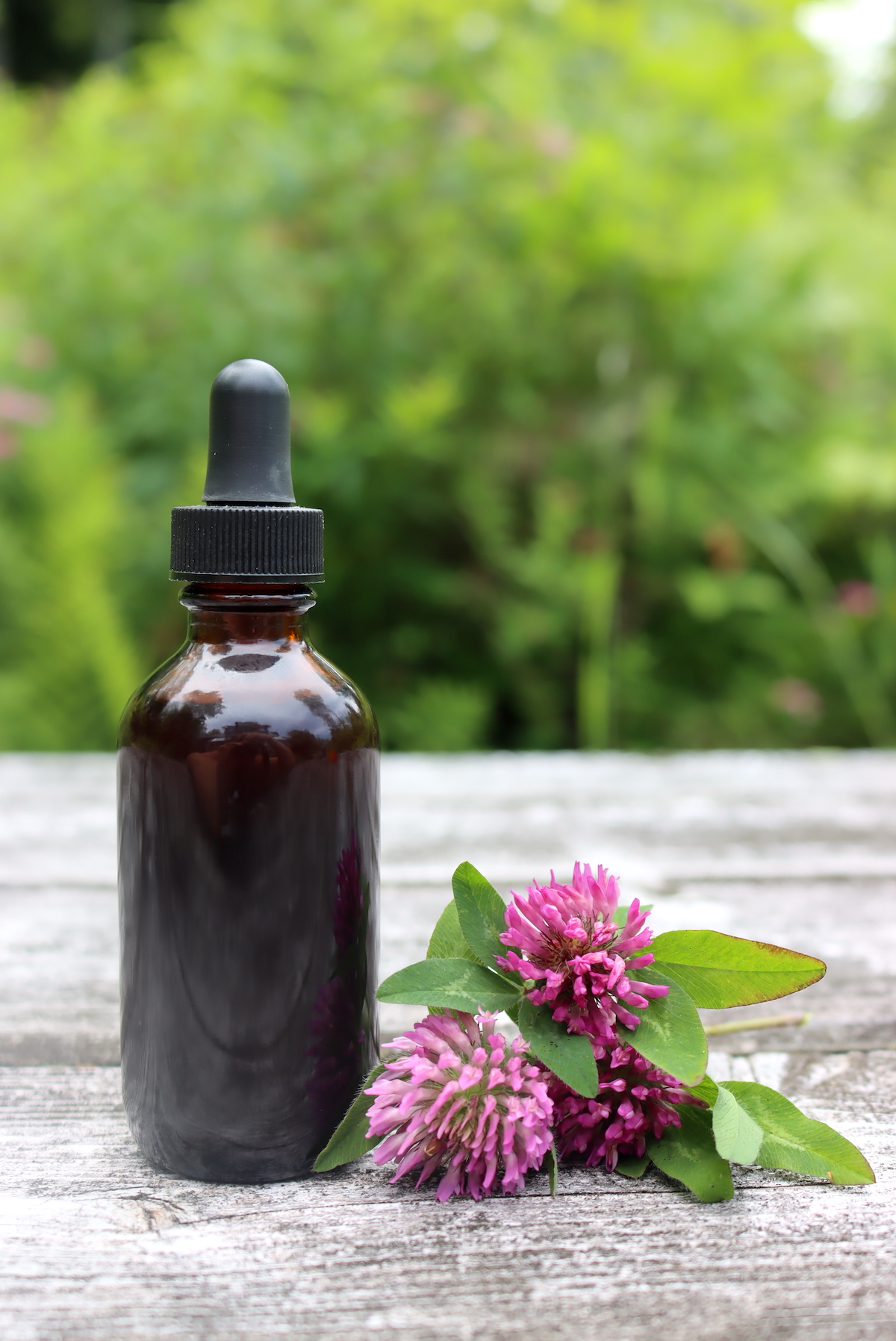
Red Clover Tincture Dosage
When it comes to finding the right dosage of red clover tincture for your individual needs, it’s always a good idea to consult with a clinical herbalist. They can help determine the best amount based on your specific health requirements.
As a general guideline, the typical dosage is 1 to 2 full droppers, taken 2 to 3 times daily. Of course, this can vary depending on your body and the purpose for which you’re using the tincture.
Red Clover Formulations
Since red clover is a gentle herb for women’s health, it can be used alone or combined with other complementary herbs.
Good choices include elderflower, linden blossom, lavender, and chamomile.
If you’re interested in the science behind combining herbs to enhance their effectiveness, I’d recommend taking this online course in Mastering Herbal Formulations from the Herbal Academy. It covers the science of blending herbs into homemade formulations in detail.

Red Clover Tincture
Equipment
Ingredients
- Fresh or dried red clover flowers
- Vodka or other high-proof alcohol *see notes for making a glycerite tincture
Instructions
- Fill a clean mason jar about three-quarters full with fresh red clover flowers or halfway full if you're using dried red clover flowers.
- Pour your chosen alcohol (vodka works well) over the flowers, making sure that the plant material is completely submerged.
- Screw the lid on tightly, then gently shake the jar to mix the contents. Place the jar in a cool, dark location, away from light, and allow the mixture to steep for 6 to 8 weeks.
- Every few days, give the jar a gentle shake to help with the extraction process. If you can remember, shaking it daily will work even better. Keep an eye on the alcohol level and add more alcohol if necessary to ensure the red clover remains fully submerged.
- After 6 to 8 weeks, when the tincture is ready, line a funnel with cheesecloth and position it over a dark amber glass bottle. Pour the tincture and red clover flowers into the funnel, pressing down to extract every last drop of liquid.
- Once the tincture is decanted, label the bottle with the contents, the date it was made, recommended dosages, and suggested uses. Store the finished tincture in a cool, dry place, away from light.
Notes
For an alcohol-free version (glycerite tincture):
Use dried red clover and cover it completely with a 3:1 mixture of glycerin and distilled water. If using fresh red clover, skip the water and use only glycerin. Shake the jar daily during the steeping process, and follow the same decanting procedure as for the alcohol-based tincture.Disclaimer on Homemade Herbal Remedies
I’ve been foraging wild medicines and treating my family with herbal remedies for the past 20 years, but I’m self-taught. Be aware that I am not a clinical herbalist, and this is based on my own research and personal experience using medicinal plants. I do not claim to have the experience that’d qualify me to advise you on your health, and I’m only providing this as a reference to encourage a broader interest in medicinal plants.
Please use this as a jumping-off point, but always do your own research and verify anything you read with multiple sources.
It’s always possible to have an adverse reaction to any medicinal herb, and plenty of people are allergic to even gentle herbs like chamomile. Always consult your doctor or a certified herbalist before trying any new medicinal plant. Often, they can have unintended reactions in combination with other herbs and supplements, and many herbs have side effects even when they are effective for their intended purpose.
If you are seriously interested in herbal medicine, I’d suggest investing in a course in herbal medicine, and I’d recommend any of the online courses put out by the Herbal Academy of New England. Specifically, the introduction to herbal medicine course and the family herbalist group of courses.
They also have a mushroom course, covering both medicinal and edible mushrooms, and a Botany and Wildcrafting Course. I’ve taken both and they’re informative, inspiring, and artfully presented.
Herbal Tinctures
Interested in making other homemade herbal tinctures?
Herbal Medicine Making
Herbal medicines don’t stop at tinctures! Learn how to make more homemade medicine…
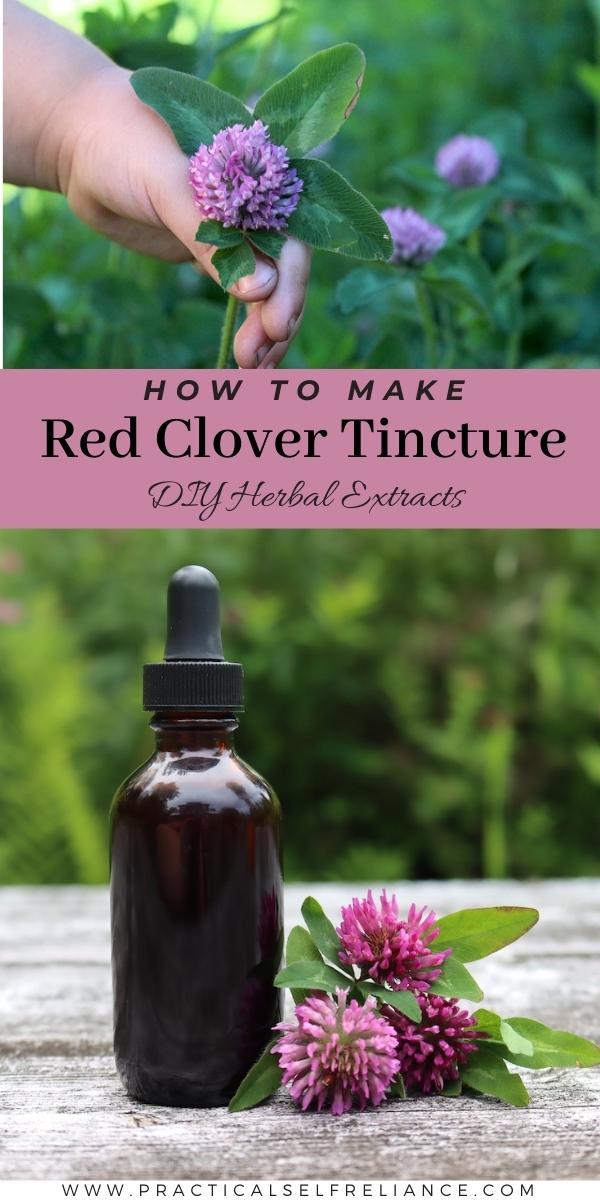
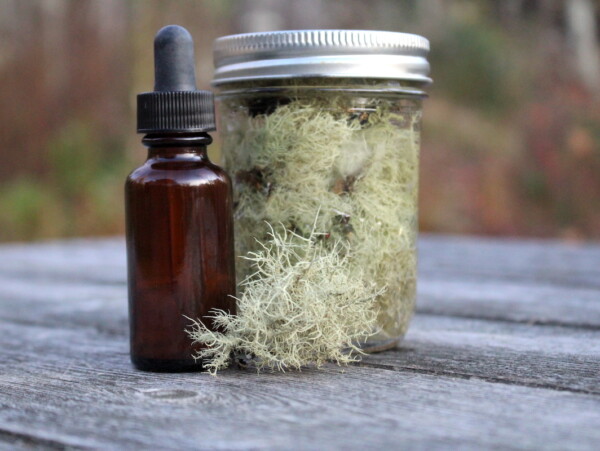
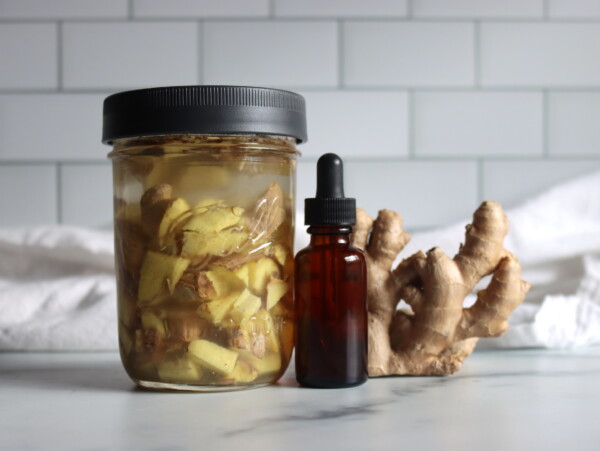
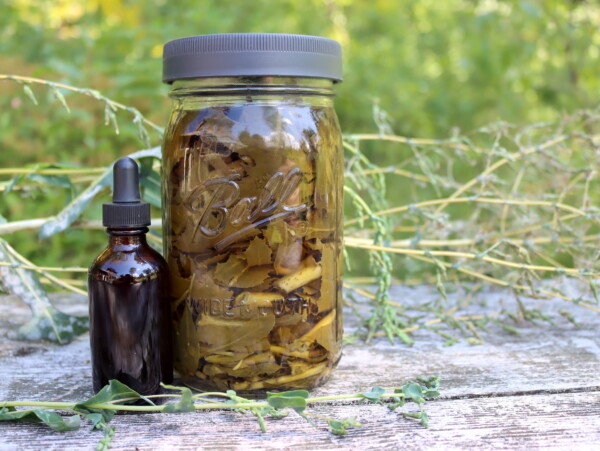
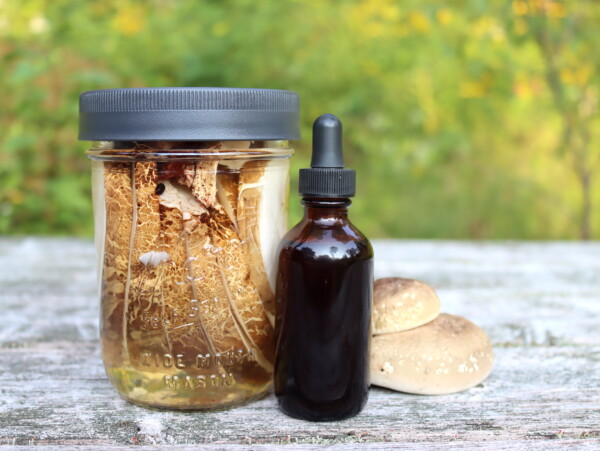
Do you have any recommendations for vericose veins? My vein specialist wants to glue a major vein my leg shut. I don’t like the idea of having glue inside my body.
I don’t have any suggestions for you, but I wish you the best of luck with it and I hope you find a good solution.
Very please with your instructions.
Thank you. We’re so glad it was helpful.